Spring mushroom foraging in New England can be a bit slow and erratic. The soil and air temperatures tend to vary, and rainfall can be unpredictable. Plus, melting snow and an abundance of mud make forest walks interesting. On the upside, the sun is out and warming up, so it’s fantastic to be outside for any reason!
The spring mushroom foraging “season” typically starts in April and lasts until mid-June. While there are plenty of mushrooms and dried polypores to examine, there are fewer edible species available compared to the summer and fall seasons.
It’s important to note that there is a range of edibility to consider. There are highly desirable edibles, such as morels and oysters, and less desirable but still edible species, which can be cooked and taste okay but not spectacular. And then, there are those that are non-edible due to toxins or texture. This guide is split into highly desirable species and the edible-but-not-so-great species. Sometimes, you only find the less desirable, and it’s nice to leave the woods with at least a few springtime mushrooms for the table.
If I’m missing any new england spring mushrooms, please let me know in the comments! And check out the guides to Winter Mushroom Foraging in New England, Summer Mushroom Foraging in New England, and Fall Mushroom Foraging in New England.
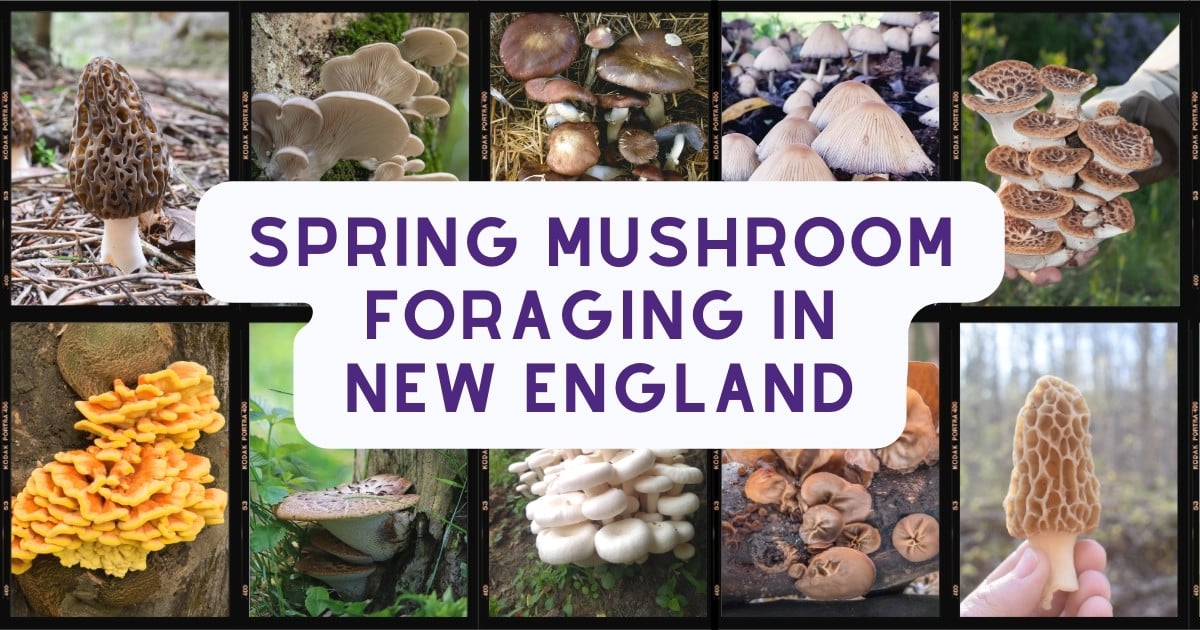
Jump to:
Top Six Spring Mushrooms In New England
Morels (Morchella)
The most beloved, often elusive, and absolutely delicious morel is a springtime special. They do not appear at any other time of year, so if you want to forage morels, you’ve got to get out there looking now. Morels are not as abundant in New England as they are in the Midwest, Appalachian region, and West Coast after fires. But they are here, and you can find them if you devote some time and patience to the search. Plus, do a fair amount of research.
Morel mushrooms have a pitted cap, a whitish stem, and are hollow. The location of the cap attachment can vary depending on the species, with some being attached at the mid-point or the top of the inside of the cap. Their size can also differ, with some being delicate and measuring 1-2 inches, while others are chunkier and taller at 3-5 inches.
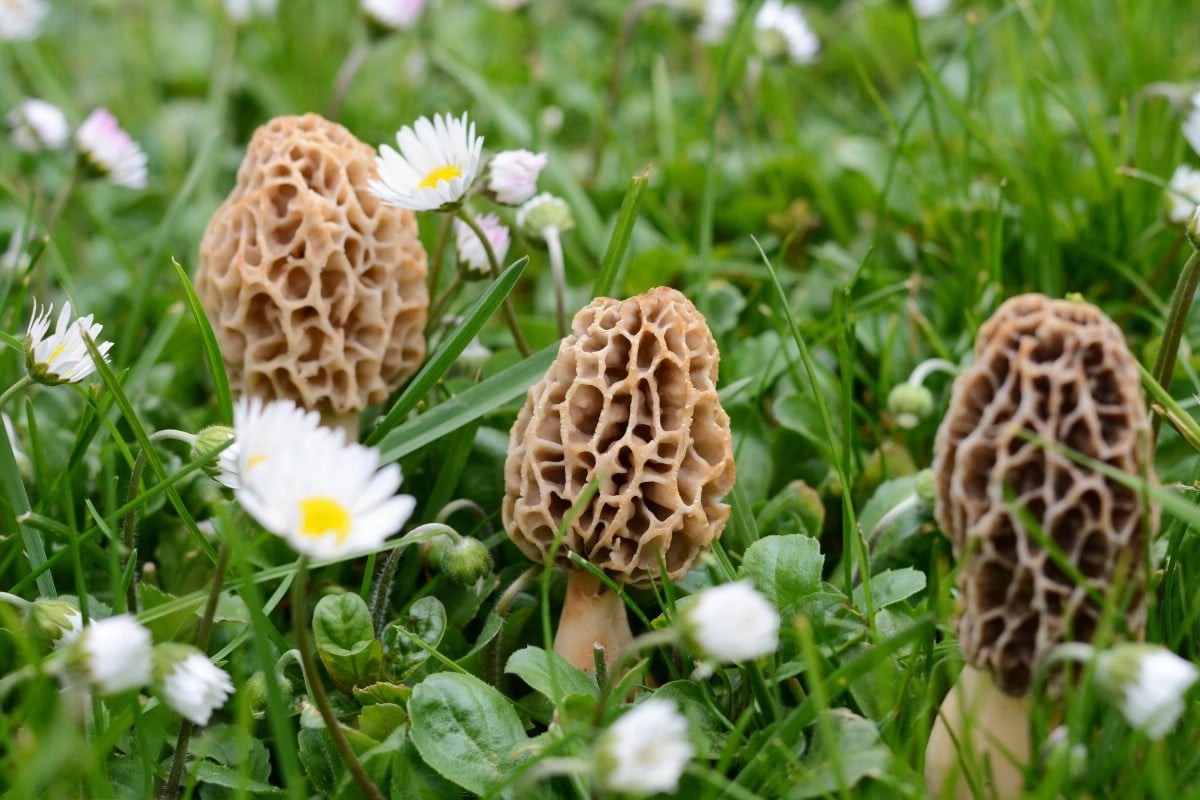
Morels appear in spring, usually in mid April to early May, depending on where in New England you are. If you follow any southern foragers or groups, you can track their likely appearance. The season starts in the warmer states, and then week by week, you can see places further north finding them as the warm weather creeps upwards. If you’re determined to find morels, I highly recommend paying attention to the progression so you can be sure to get out looking for them at the correct time.
Many people say that morels appear when the lilacs bloom, which is generally a good marker for their fruiting. However, this can be misleading depending on the climate, season, and the lilac bushes. You may find yourself missing out on some morels if you’re solely basing your searches on when the lilacs bloom. It could be that most morel patches only fruit later, but who knows what you’re missing out on by not looking earlier?
The Facebook Group Morel Mushroom Find Reports is an excellent and reliable resource. The Morel Sightings Map, which is updated annually, is another excellent way to see where people are finding morels.

An important point to consider when foraging morels (and any mushroom) is that elevation matters. Experienced foragers follow the morels up the mountains as the weather progressively warms up the mountain tops. This extends the season quite dramatically and can have you finding morels into June in cooler, higher-elevation areas.
In New England, a good place to look is in old apple orchards since there are many of them. You want to be sure the orchard wasn’t treated with pesticides because mushrooms will absorb those, too. Ash trees are also another prime habitat for several species and a great place to start. Learn how trees and morels are linked so you can have better success finding these gems.
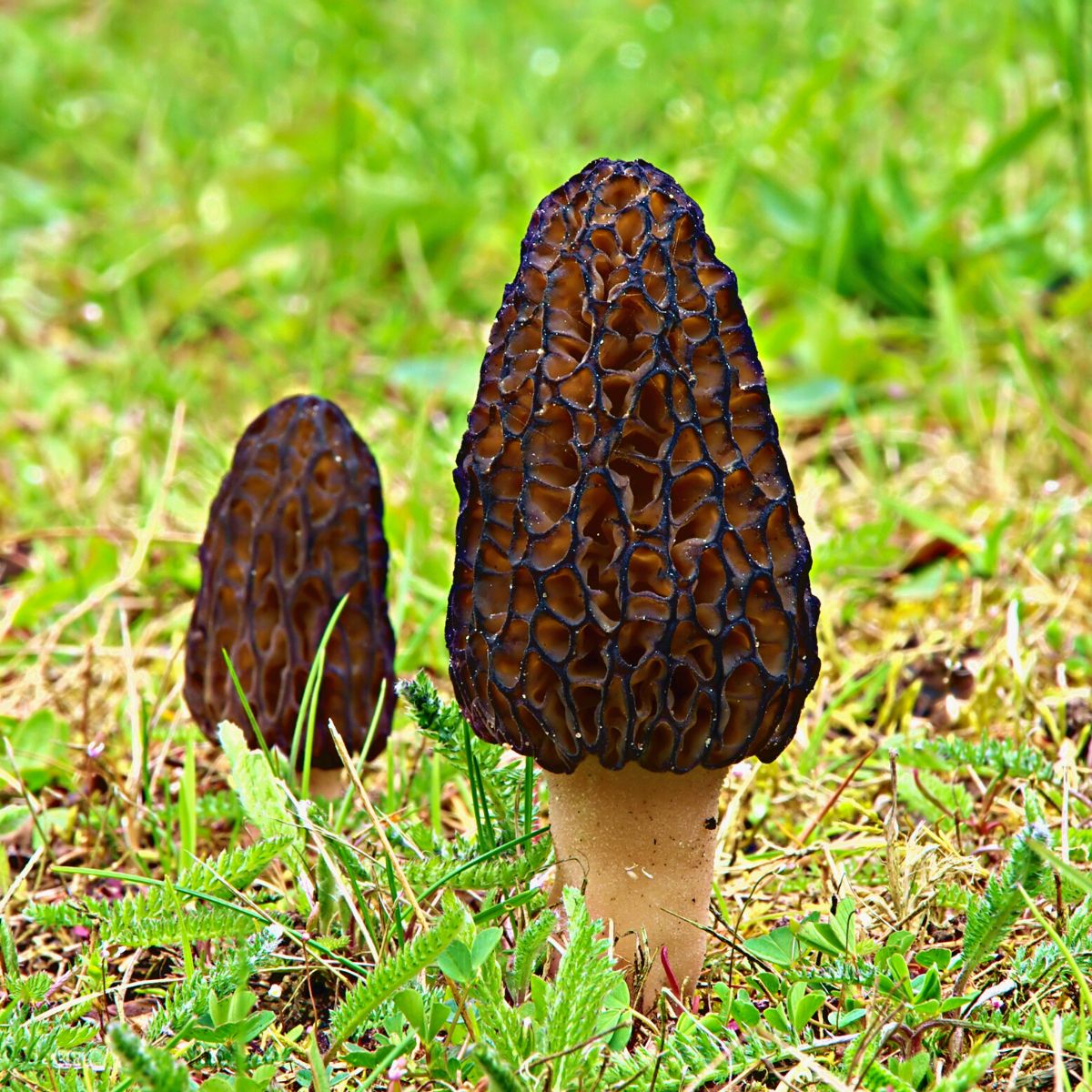
There are five morel species in New England. They don’t all have the same habitat, so you want to narrow your search based on what you’re looking for:
- Morchella americana – a yellow morel that grows with ash, elm, cottonwood, apple, and pear trees, among others. Looks gray when young, then develops yellowish brown ridges and pits.
- Morchella prava – a yellow morel that likes sandy locations, like rivers and lakes. Prefers oak trees and pines but will grow with other. Light yellow or white ridges and gray pits that make it look like a gray in general. Pits do turn yellowish with age.
- Morchella angusticeps – a black morel that fruits around apple, cherry, tulip, and ash trees. It is tan or yellowish-brown when young but darkens to black with age.
- Morchella septentrionalis – black morel that grows with ash and big-toothed aspen. It is almost identical to Morchella angusticeps, except it is smaller and might be found growing out of decaying wood (an unusual trait for morels). This species is found north of the 45th parallel and most likely is only in northern New England.
- Morchella punctipes – a half-free black morel with a cap smaller than other morels. It grows with hardwoods. The cap looks like a thimble setting atop a tall white stem.
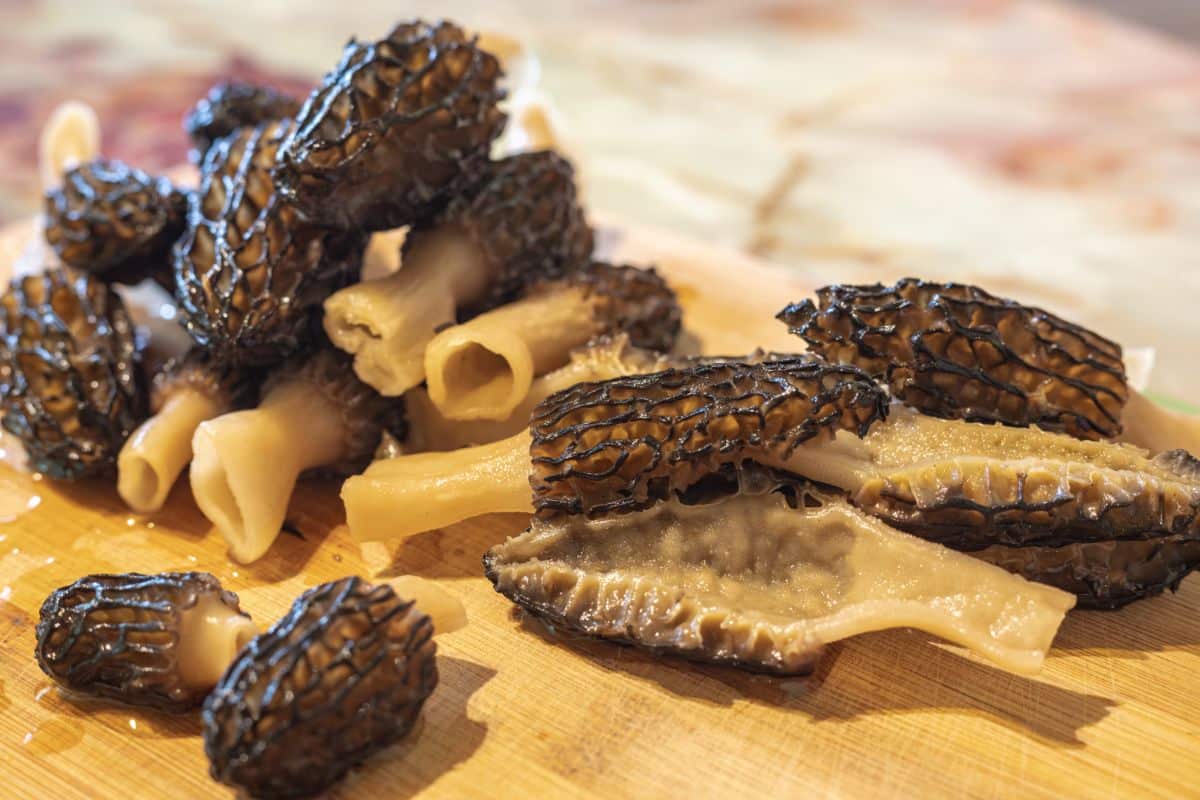
Oyster Mushrooms (Pleurotus)
If the weather has been mild enough in the spring, oyster mushrooms (Pleurotus ostreatus) will pop up. These mushrooms have light brown caps, white to buff gills, and dense white flesh. Oyster mushrooms are most often found on deciduous hardwoods (trees that lose their leaves). Beech and aspen trees are common, and sometimes, they grow on conifers as well. Oyster mushrooms have a mild anise odor, meaning they smell a little sweet, like licorice.
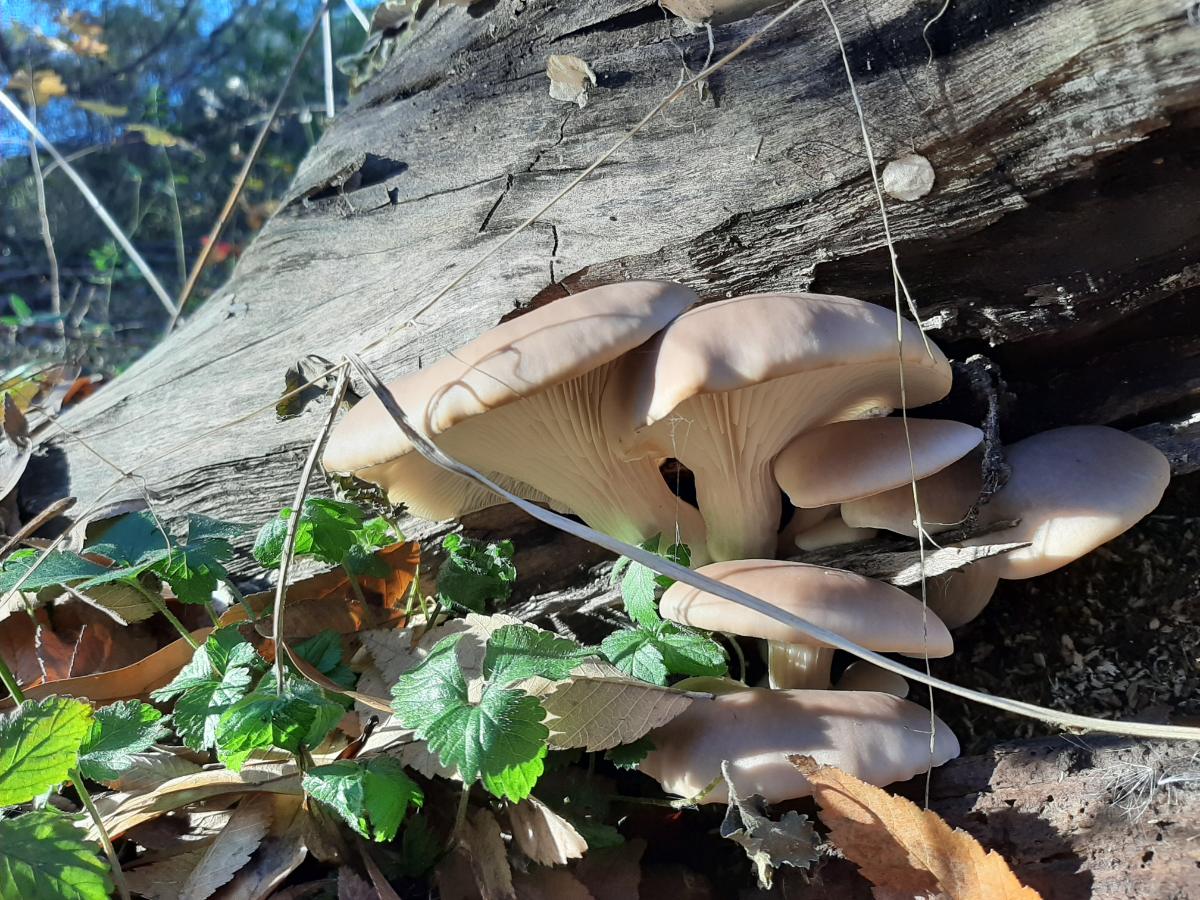
The aspen oyster mushroom also appears in spring; it is actually commonly known as the spring oyster. It grows primarily on quaking aspen trees but will also fruit from other aspen species as well as cottonwoods. It might have a slight anise scent or just smell lightly mushroomy.
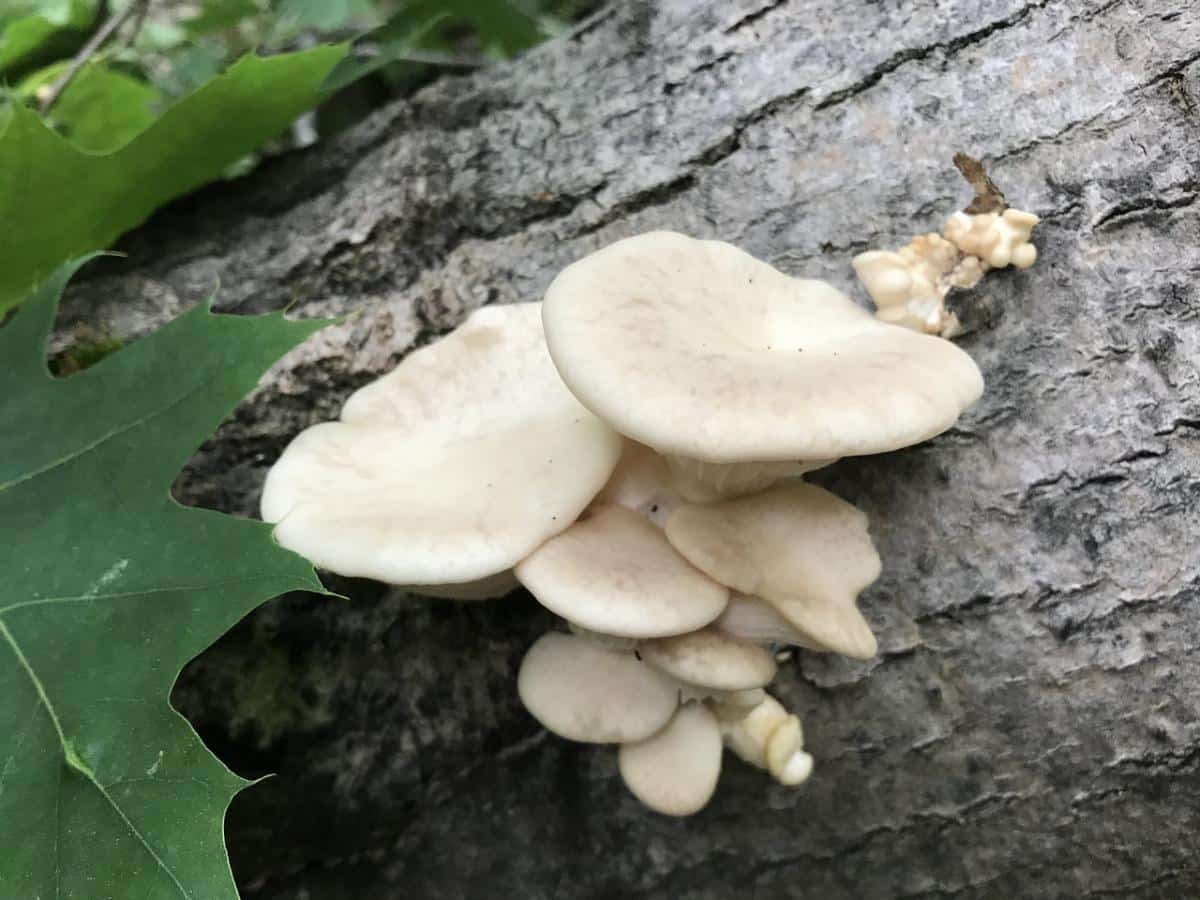
The common oyster mushroom is often followed by the spread of yellow oysters (Pleurotus citrinopileatus) in our region. Yellow oyster mushrooms grow on hardwoods and prefer elms. They are also found on oak, beech, and other hardwood species. These non-native oysters fruit in huge colonies and should be foraged with abandon. It helps that they’re excellent eating!
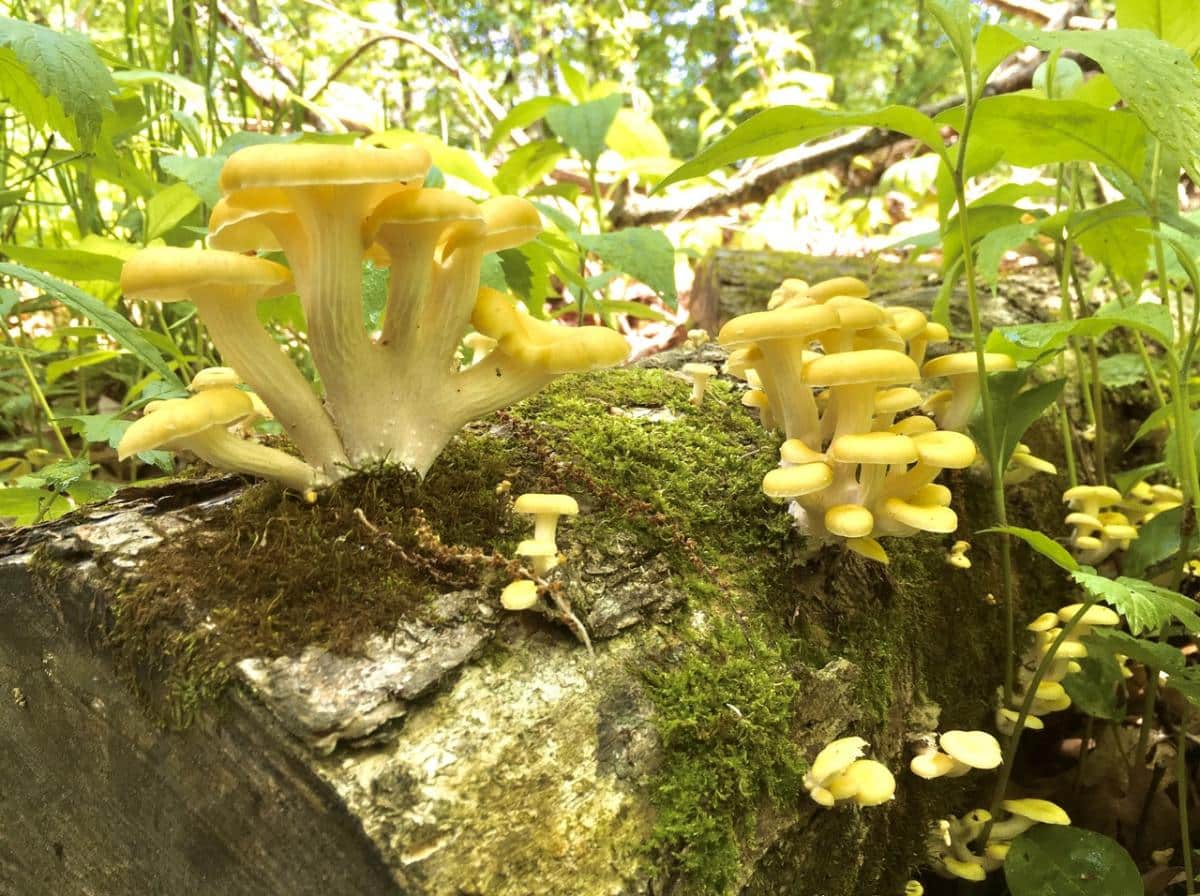
Wine Caps (Stropharia rugosoannulata)
The cool-weather-loving wine caps fruit in spring and fall. They grow in wood chips and mulch, feeding off decaying organic material. They have burgundy caps and get quite large, like portabello mushrooms. They have a distinct cog-wheel-shaped ring on the stem, and their gills start off as a pale gray and mature into a dark purplish gray shade.
These mushrooms are known for their meaty texture and strong flavor, making them perfect for dishes like stuffed and baked, grilled, or risotto. They’re very much like regular store-bought button mushrooms, except better.
Wine caps grow in the wild but are also commonly cultivated because they are the easiest outdoor mushrooms to grow.
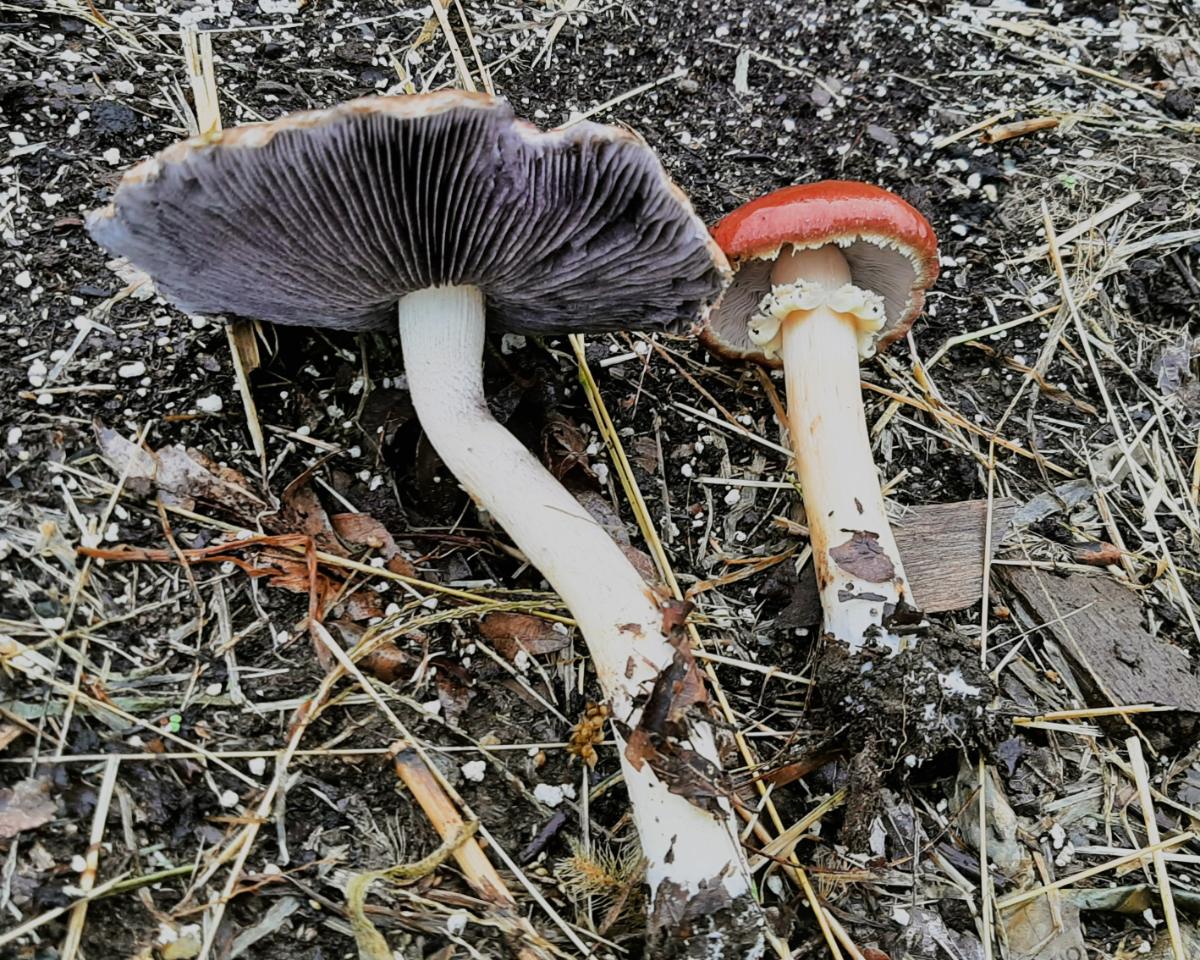
Dryad’s Saddle (Cerioporus squamosus)
The wacky-looking dryad’s saddle, aka pheasant’s back polypore, aka hawk’s wing, is an often overlooked and disparaged mushroom due to its propensity to be tough. The thing is, toughness occurs with age. Young dryad’s saddle is a prime, delicious edible mushroom. To say it’s “bad” is like picking a rotten apple off a tree, taking a bite, and declaring all apples are gross. Picking it at the right time makes a huge difference.
The dryad’s saddle has a unique crunchy texture and a more robust flavor compared to other mushrooms, making it perfect for pickling or adding to strongly flavored dishes. The caps of the dryad’s saddle have tiny hairs, and the pore surface smells like watermelon rind or cucumber.

Chicken of The Woods (Laetiporus)
The much-sought-after chicken of the woods primarily fruits in late summer to early fall, but they also will show up whenever they want (don’t tell me what I can and cannot do, says this mushroom!). Chicken mushrooms grow on decaying wood in massive overlapping clusters. They become tough and inedible as they age, so check your find before harvesting them.
Although chicken mushrooms do not taste exactly like chicken, they have a similar texture to chicken when cooked. They can be prepared in various ways and paired with different flavors, such as poaching, frying, sauteing, baking, mincing, or coating with breadcrumbs. They also work well with BBQ spices and sauce, poultry seasoning, ginger and garlic, and marinade. Due to its versatility, the chicken mushroom is an excellent substitute for meat in vegetarian meals.
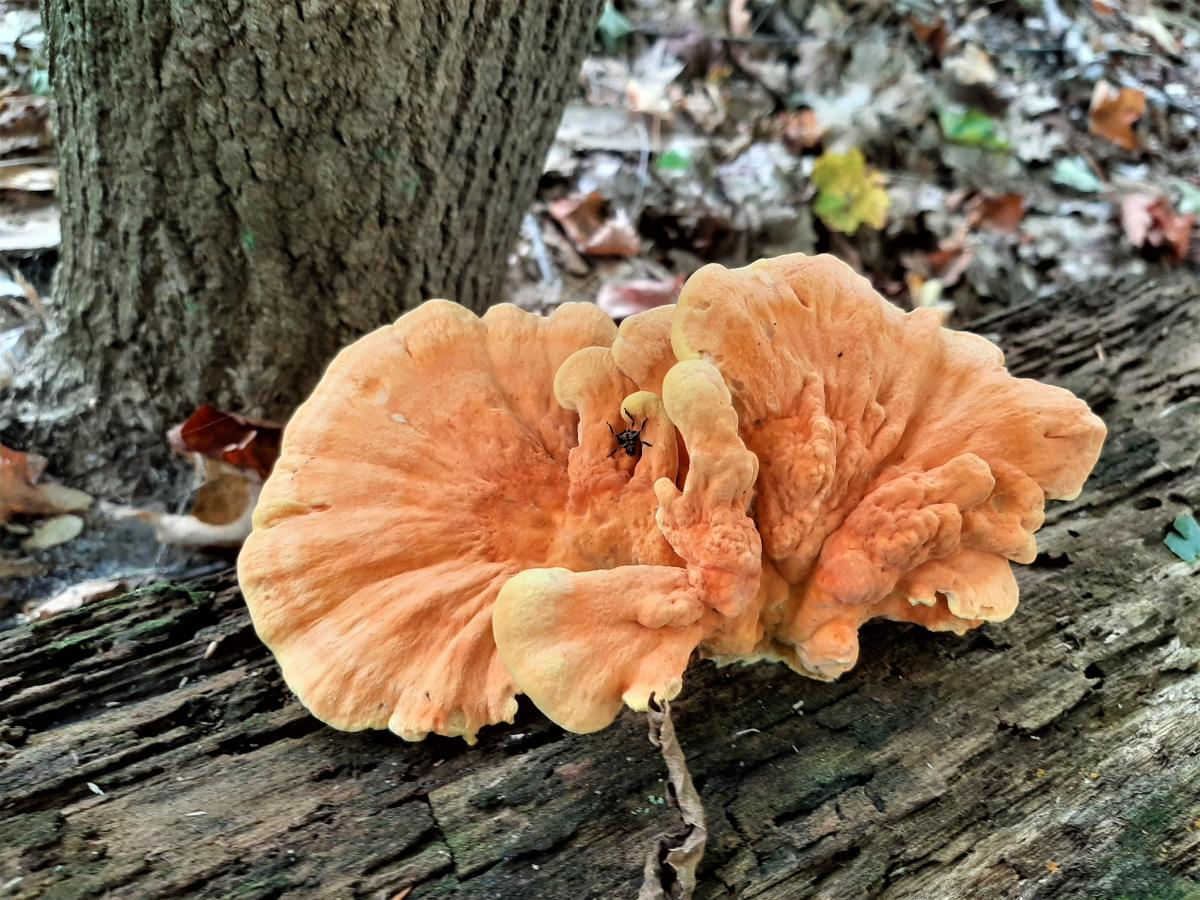
Wood Ears (Auricularia)
These mushrooms grow on wood, have a gelatinous texture, and are covered with fine, fuzzy hairs on one side. And they look so much like human ears—it’s creepy! It should be noted that not all brown jellies are wood ears, so it is important to know the lookalikes. Some may belong to the Exidia genus, like amber jelly rolls, but they are still safe to consume.
While wood ears may not have a strong flavor, they add a unique textural element when incorporated into soups and stir-fries. They also dehydrate well and can be easily rehydrated with water.
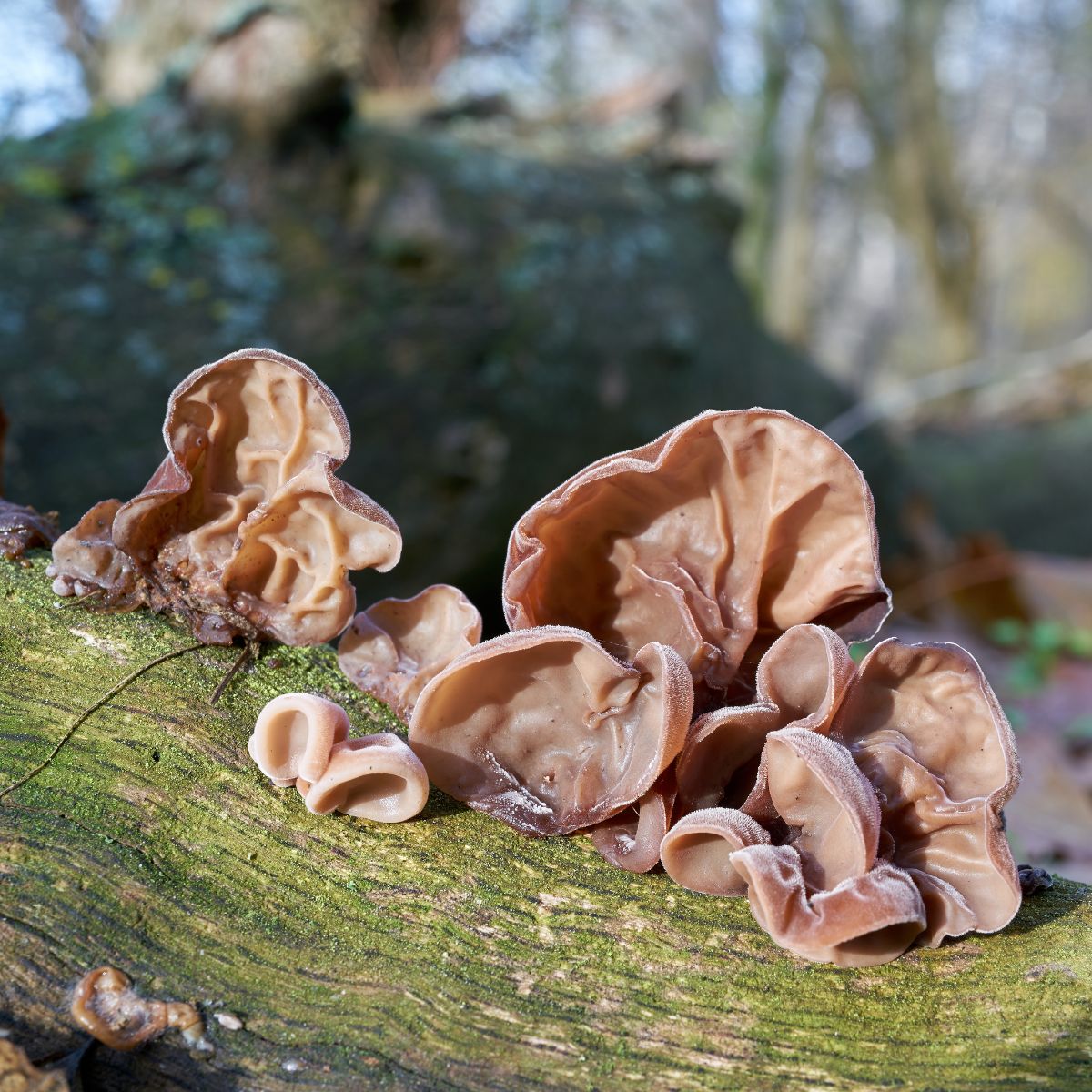
Three Edible But Not Prime New England Spring Mushrooms
Mica caps (Coprinellus micaceus)
Inky cap mushrooms don’t have much substance, which is why they’re not a prime edible. You can find them in massive fruitings, but it takes a lot of them to make a meal. These are more for adding bulk or flavor to something else. Do not eat these with alcohol! They contain a substance that makes them toxic when eaten with alcohol.
While inky caps can be abundant, they are often filled with dirt and, being one of the “inky” mushrooms, will turn to liquid if not cooked quickly. Common inky caps and Mica caps are the most common. They appear after heavy rains and deteriorate quickly – often becoming gooey mush within 24-48 hours.
Pick inky caps when they’re young, preferably when they’re still bell-shaped and don’t have fully grown stems. They have a rich mushroomy taste that is best combined with risotto, quiche, or stews.
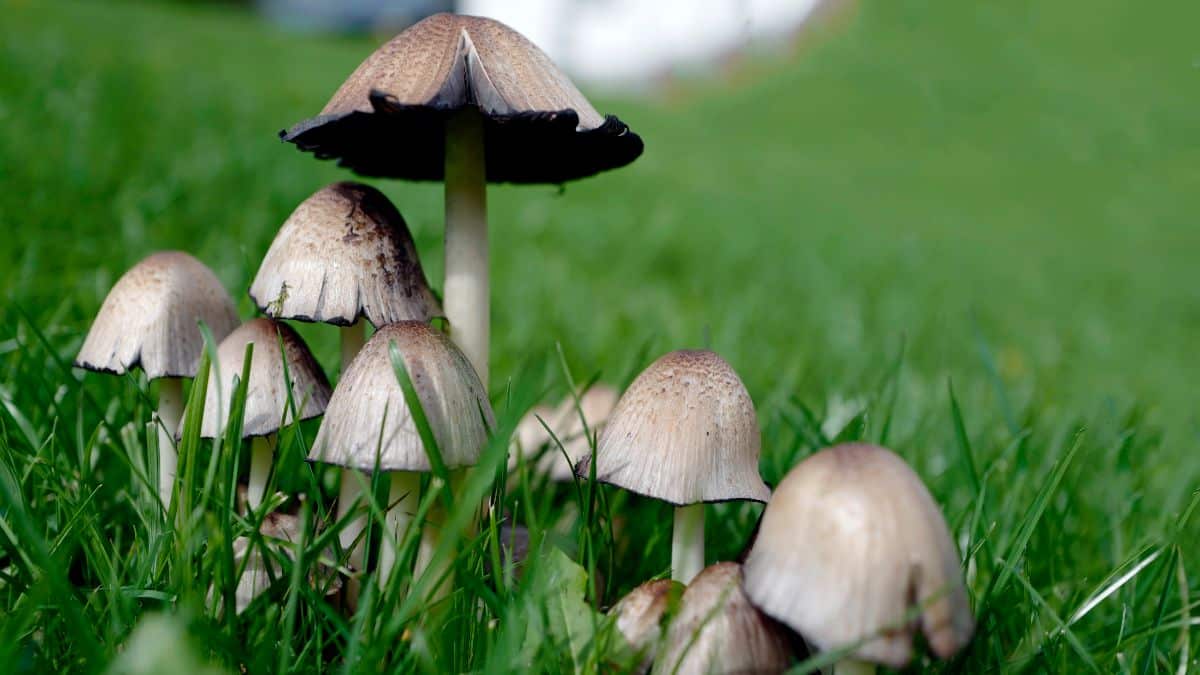
Deer Mushrooms (Pluteus cervinus)
Deer mushrooms have little flavor; they’re bland in looks and taste. And, there isn’t much to them – they’re mostly gills with no fleshy cap “meat.” But they are edible and prolific across the country in spring. In New England, they’re one of the first mushrooms to appear after the snow melt.
Deer mushrooms grow on dead and rotting wood. They most often fruit from hardwood, but they will also grow on conifers. They exclusively grow from wood; sometimes, it looks like they’re growing from the ground, but they’re actually growing from buried wood.
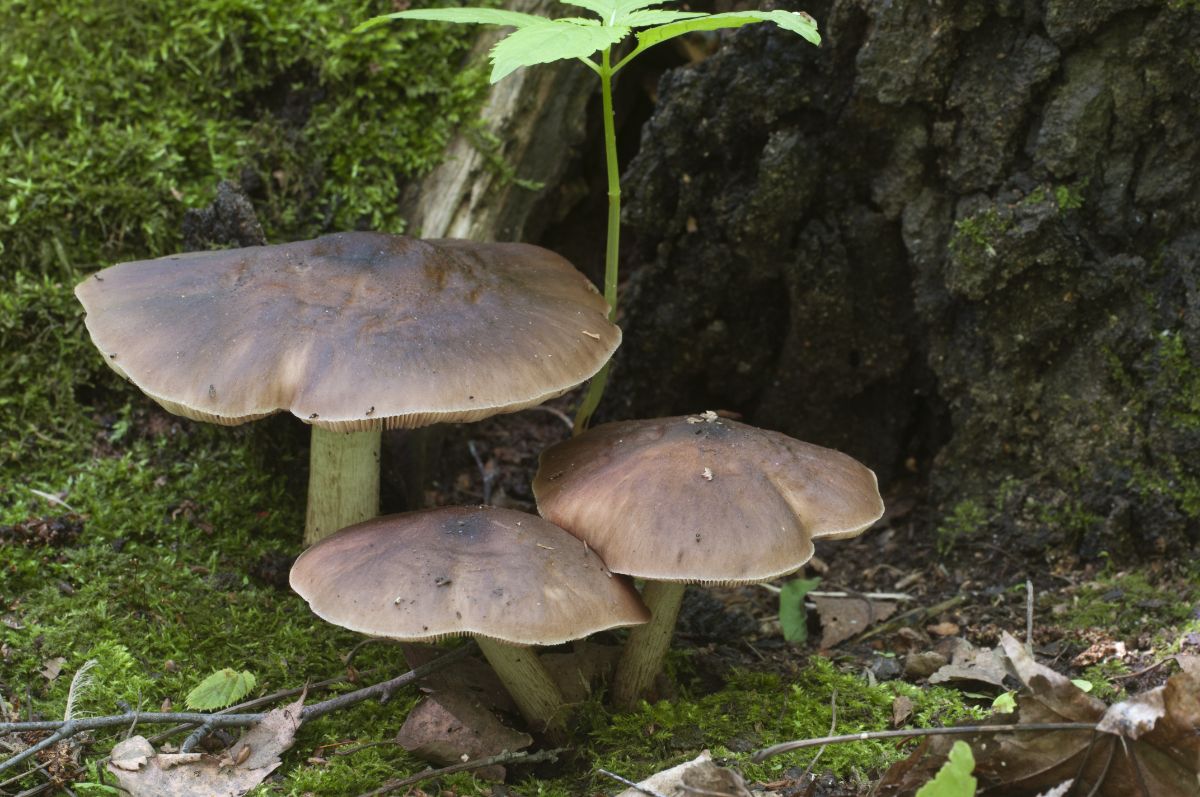
Platterful Mushrooms (Megacollybia rodmani)
Like the deer mushroom, the platterful mushroom is mainly composed of gills with very little cap flesh, even though it is enormous. Platterful mushrooms are gray to olive-colored and grow from dead hardwood. They tend to be a late spring into summer mushroom, showing up after the morel season ends. These mushrooms can reach up to 8 inches wide—they’re hard to miss!
Platterful mushrooms generally show up after heavy rains in May and June. Be cautious when foraging this species, as there have been recent reports of it causing gastrointestinal distress. They’ve been foraged for a very long time without any toxicity reports, so it’s likely the reactions were individual or due to improper cooking. However, since we can’t be sure, it’s best to exercise caution.
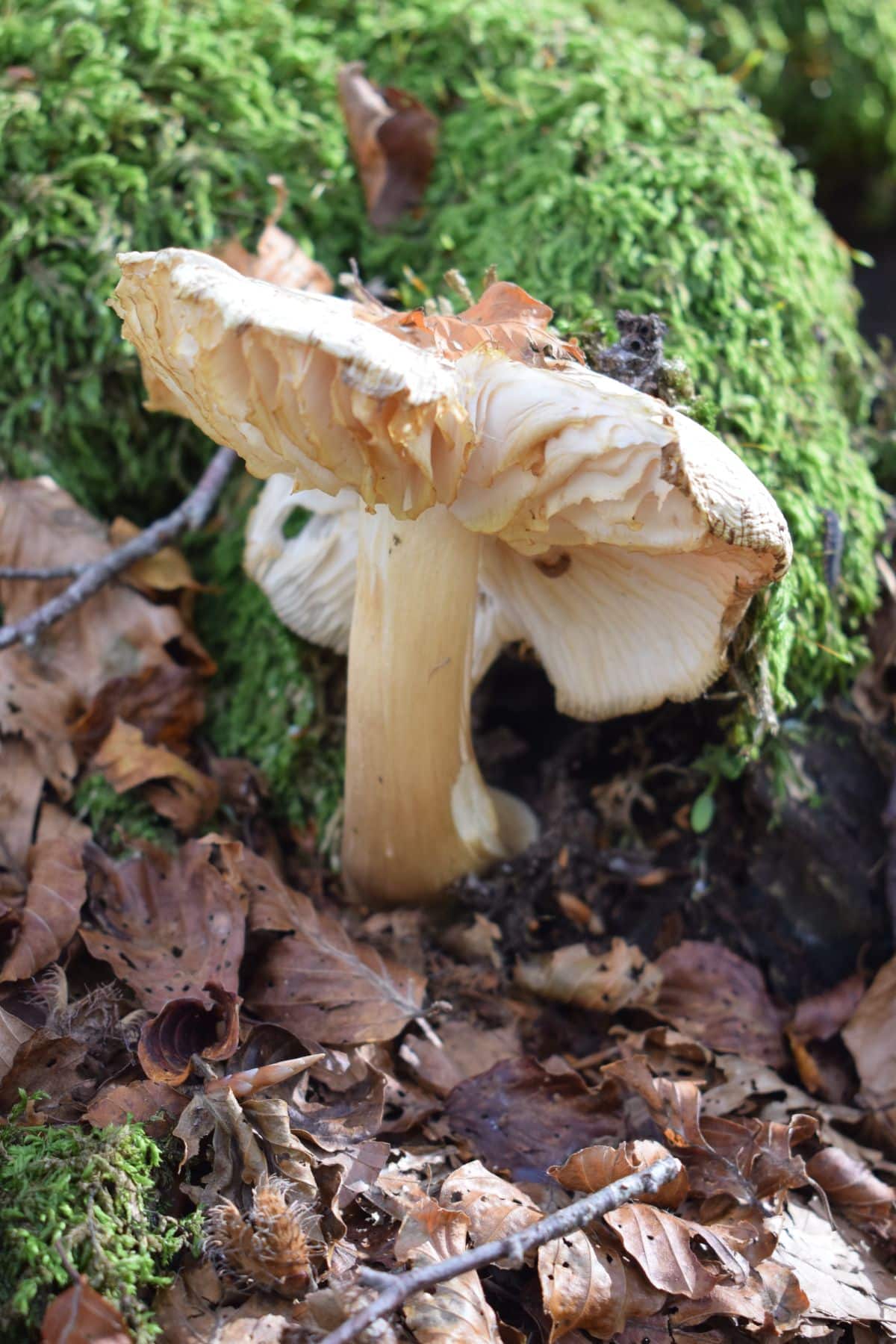
Spring Is Investigation Time!
Spring is the ideal time to scope out new foraging locations. In spring, I gather clues to predict or anticipate summer and fall foraging expeditions. It’s all about being observant and aware of your surroundings.
A helpful technique to anticipate the future of foraging is to pay attention to the trees, not just the ones you are searching for morels around. Take note of large groups of mature oak trees, as they can guide you to the location of oak-lovers like hen-of-the-woods.
Before the trees’ leaves fully appear and the underbrush grows, it is valuable to observe your surroundings closely. You may spot things that will be hidden by foliage later in the year. For instance, I discovered an old chicken mushroom rotting on a log. Knowing that they come back to the same spot every year, I marked that location.
During prime chicken of the woods “season,” I would never have seen this one because of all the underbrush and foliage. In fact, I’m sure I passed by the spot several times in prime chicken season without ever seeing it. Use the lack of leaves and minimal underbrush to your advantage and note any potential locations to look later in summer or fall for other mushroom species.
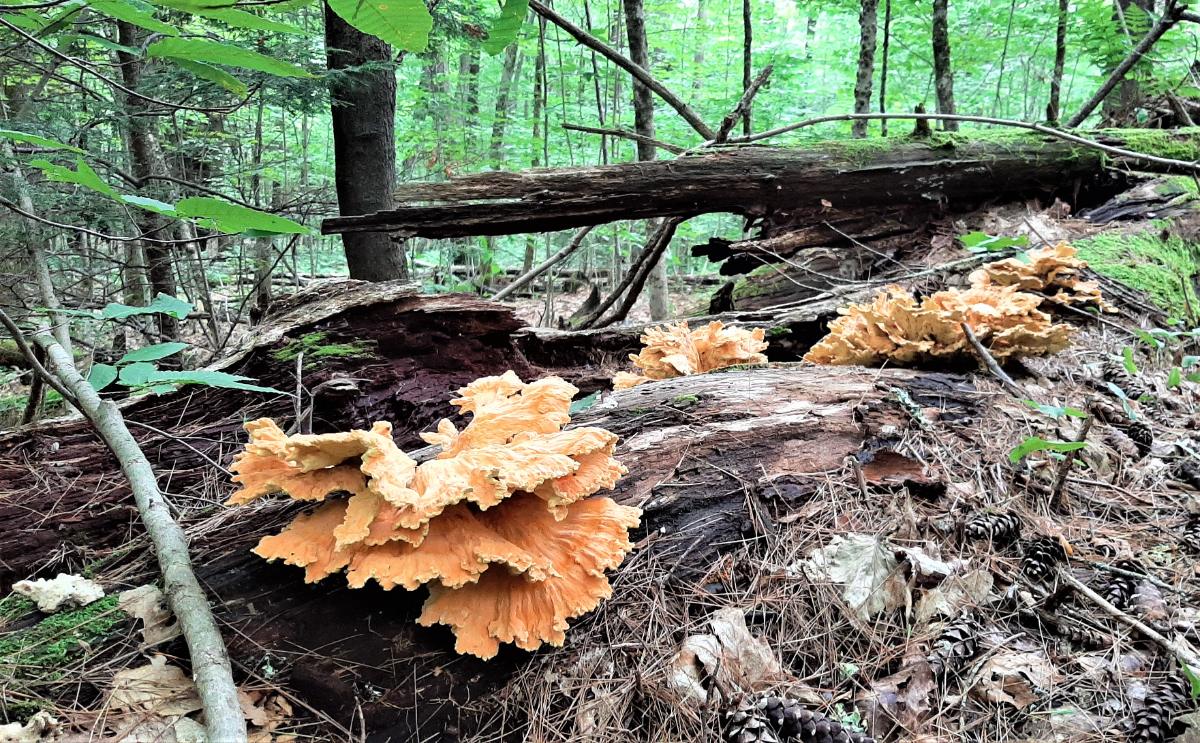
Mushroom Foraging Resources
If you’re new to mushroom foraging, here are some great guides to get started: How To Be A Successful Mushroom Forager, Mushroom Foraging 101, and Mushroom Identification Pictures and Examples.
This guide to the best identification books by region will help you find the best guides for you.
Curious about spring foraging in other areas? Check out our guides for across the US.

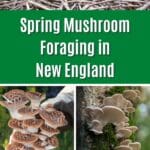
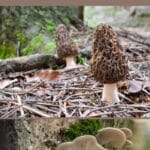
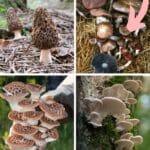
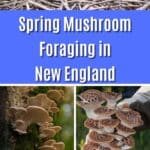
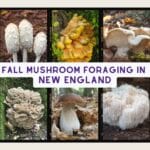
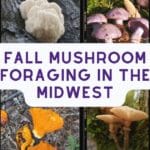
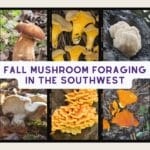
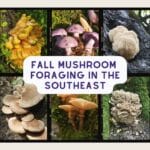
Leave a Reply